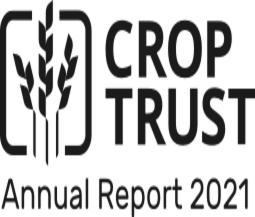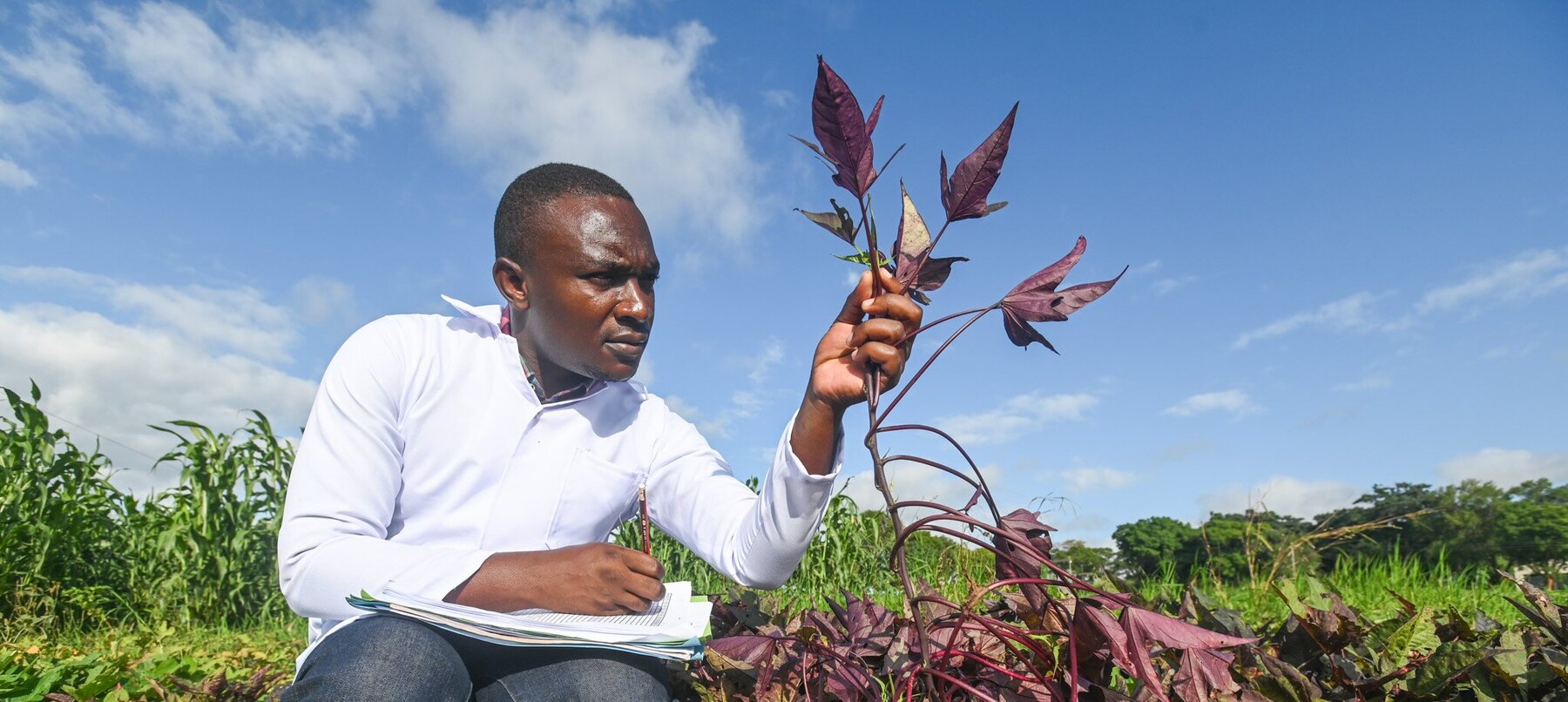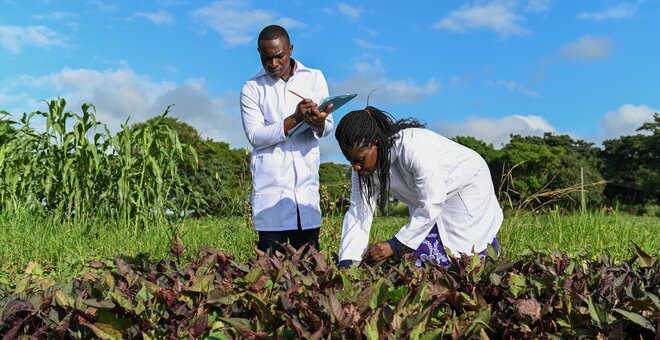A chill solution for tomorrow’s sweetpotatoes
A new Crop Trust project is preserving sweetpotato landraces from Madagascar and Zambia, cleaning them of diseases so they can yield better, and putting them back into the hands of farmers. The lessons learned will serve as a model for other crops that are not conserved as seed.
At a Glance
The Sweetpotato Project will collect landraces of the crop from Madagascar and Zambia, put them into long-term cryoconservation at the International Potato Center (CIP) and make them available under the International Treaty on Plant Genetic Resources for Food and Agriculture. It will strengthen the capacity of national partners to multiply and distribute disease-free planting material to smallholder farmers, who will benefit from having better access to diverse, disease-free planting material.
- PROJECT TITLE: Sweetpotato, a model for food security and the long-term conservation of biodiversity
- HIGHLIGHTS FROM 2022: 80 landraces were collected in Madagascar and 30 were selected from Zambia; all were placed in in vitro collections; 60+ landraces from the two countries underwent heat treatment and shoot-tip culture to eliminate pathogens; DNA fingerprinting of the entire set is under way; national programmes received training in photography, in vitro multiplication, disease cleaning and record-keeping.
- FUNDING PARTNERS: UK Darwin Initiative, CGIAR, Crop Trust
- PARTNERS: International Potato Center (CIP) in Peru and Kenya; Zambia Agricultural Research Institute (ZARI); Fiompiana Fambolena Malagasy Norvéziana (FIFAMANOR) of Madagascar.
Act now or lose diversity forever
According to the Intergovernmental Panel on Climate Change, sub-Saharan Africa (SSA) is one of the regions of the world that is most vulnerable to climate change and variability. This, together with agricultural change, is already threatening crop diversity in the region, and options for the future are being lost daily.
Improvement efforts focused on major grain crops, such as wheat and maize, have largely failed to reduce food insecurity in SSA. The search for sustainable, resilient and practical solutions to the challenges facing smallholder farmers is increasingly centered on the local roots and tubers that are critical to food security across the continent. One crop of particular interest is sweetpotato. It is tolerant to drought and can regenerate even after seemingly dying back. The roots contain a wide range of nutrients, including vitamins C and B6, as well as dietary fiber and carbohydrates.
For centuries, traditional sweetpotato landraces have been a lifeline for subsistence smallholder farmers, who often prefer them over improved varieties, and other crops, because of their tolerance to pests, diseases and drought; their flavor, cooking and nutritional qualities; and their relatively undemanding production requirements.
However, agricultural development and the effects of climate change, including the arrival of new pests and diseases, threaten this local diversity.
Conservation challenges
Conserving the sweetpotato is challenging because it cannot be kept as seed like many other crops, such as cereals. Sweetpotato diversity in Africa is maintained in field collections. But such collections are under severe and constant risk, as they are exposed to the vagaries of the climate and the attacks of pests and diseases. They also require a lot of labor and other resources to maintain. As a result, existing collections are being lost.
To avoid these problems, international genebanks safeguard their collections as plantlets growing on culture medium in test tubes under controlled conditions—so-called in vitro conservation. This protects them from many of the risks facing field collections, but in vitro conservation is also expensive and labor-intensive. That means that keeping a safety duplicate of an in vitro collection can be prohibitive.
Fortunately, there is a good, cost-effective alternative for the secure, long-term conservation of these crops: cryopreservation—storing plant parts under liquid nitrogen. At this ultra-low temperature—minus 196 degrees Celsius—all biological and chemical processes in the plant slow to a virtual stop. Plant samples can be conserved for decades this way. When they are taken out of the liquid nitrogen, they can be revived and carefully grown into full plants.
“Clean and share”
In 2022, the Crop Trust, together with the International Potato Center (CIP), the Zambia Agricultural Research Institute (ZARI) and Fiompiana Fambolena Malagasy Norvéziana (FIFAMANOR) in Madagascar, initiated a three-year project to test a model for the conservation and use of sweetpotato diversity.
“Sweetpotato, a model for food security and long-term conservation of biodiversity,” is funded by the UK Darwin Initiative, CGIAR and the Crop Trust.
The project is piloting a “clean and share” conservation approach for sweetpotato landraces, whereby project partners will collect, clean and process unique landraces for cryopreservation and then return disease-free planting material to smallholder farmers.
Vines collected from local landraces in Madagascar and Zambia will initially be sent to CIP’s facility at the Kenya Plant Health Inspectorate Service (KEPHIS). There, they will be put in vitro and cleaned of diseases using heat treatment. The disease-free material will be sent back to the national partners to be grown out and returned to farmers. The landraces will also be sent to CIP’s genebank in Peru for further screening and cryopreservation.
The “clean and share” approach ensures the long-term availability of disease-free planting material as disease load climbs again over time in farmers’ fields.
The incorporation of the landraces from Madagascar and Zambia in the global collection of sweetpotato held in trust at CIP-Peru ensures that the unique traits of these landraces will also be available and accessible to plant breeders and other researchers worldwide. They can then be used to breed climate-resilient and pest- and disease-resistant crops for the future.
Focusing on indigenous landraces that are locally adapted and preferred by women for processing and consumption, the project aims not only to increase yields in the short term, but also to conserve irreplaceable diversity and to ensure sustained benefits in the long term.
Building capacity for long-term sustainability
A key component of the approach is building the capacity of ZARI and FIFAMANOR to conserve and multiply cleaned sweetpotato materials. These partners, in turn, will train farmers to multiply clean planting materials and to identify and manage diseases in their fields.
Off to a flying start
Starting activities in June 2022, the project was well ahead of schedule by the end of the year, with more than 80 landraces collected in Madagascar (in collaboration with a USAID-funded Bureau for Humanitarian Assistance project coordinated by CIP-Kenya). Meanwhile, 30 landraces were selected in Zambia and collected by the Seeds for Resilience project of the Crop Trust, with support from KfW, the German development bank. The target was 30 landraces from each country. Forty of the Malagasy landraces and 50 of the Zambian ones were undergoing in vitro culture and heat treatment in Kenya to eliminate viruses and other pathogens, again ahead of the target of 25 from each country.
Leaves from all of the landraces have been sent to the Australian company Diversity Arrays Technology (DArT) for DNA fingerprinting. The results will be used to assess the diversity of the materials collected and compare it with what is currently held at CIP. DArT will also develop genetic markers to support future breeding efforts.
Capacity-building efforts included: (i) virtual photography training for partners in Madagascar and Zambia to help them better document project activities and provide material that will be used in public information campaigns; (ii) the development of a database by CIP-Kenya for the documentation of passport and phenotypic data on the landraces collected; and (iii) a technology transfer session between CIP-Kenya and CIP-Peru on techniques being used by the project, including in vitro multiplication, disease cleaning and recordkeeping.
Related news and resources
Chill Solution for Meeting Future Demand of Sweetpotato
From Lima to Lusaka, open the menu of one of the fancier burger joints and you may well find fries made from sweetpotatoes rather than the more common, blander sort of tuber. The value chain that ensures that this delicious snack...
31 Mar 2023


